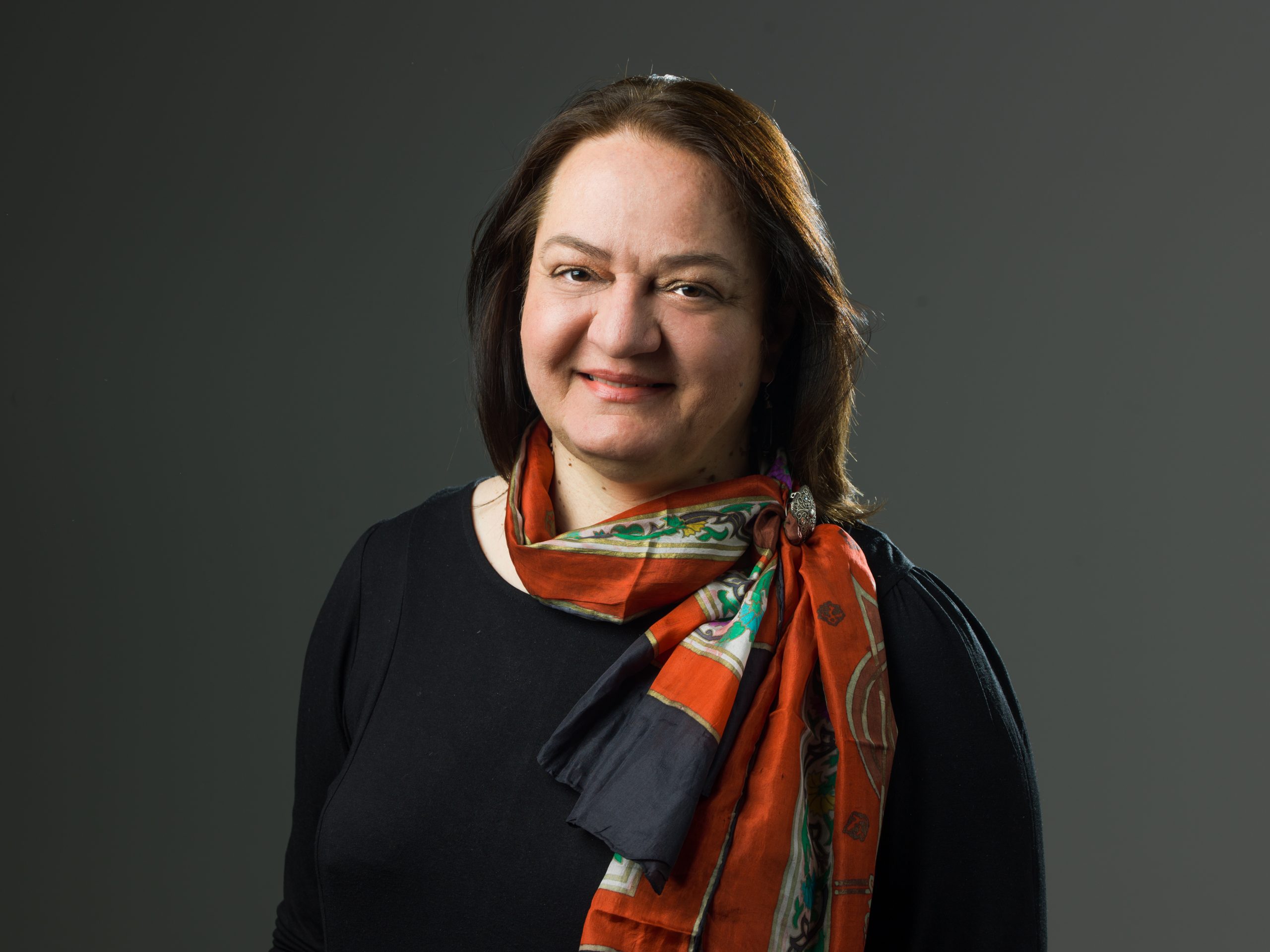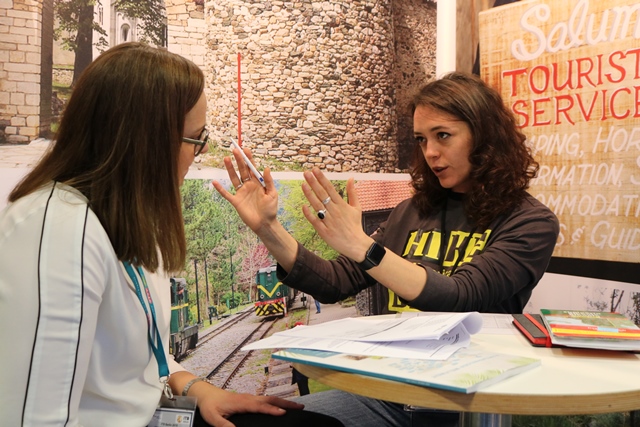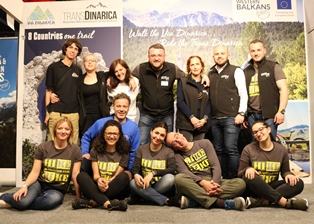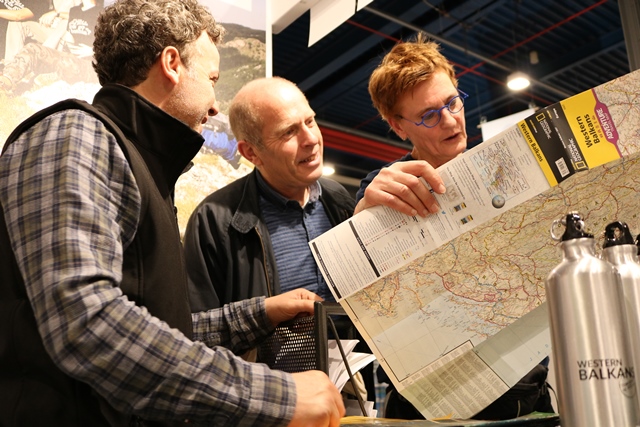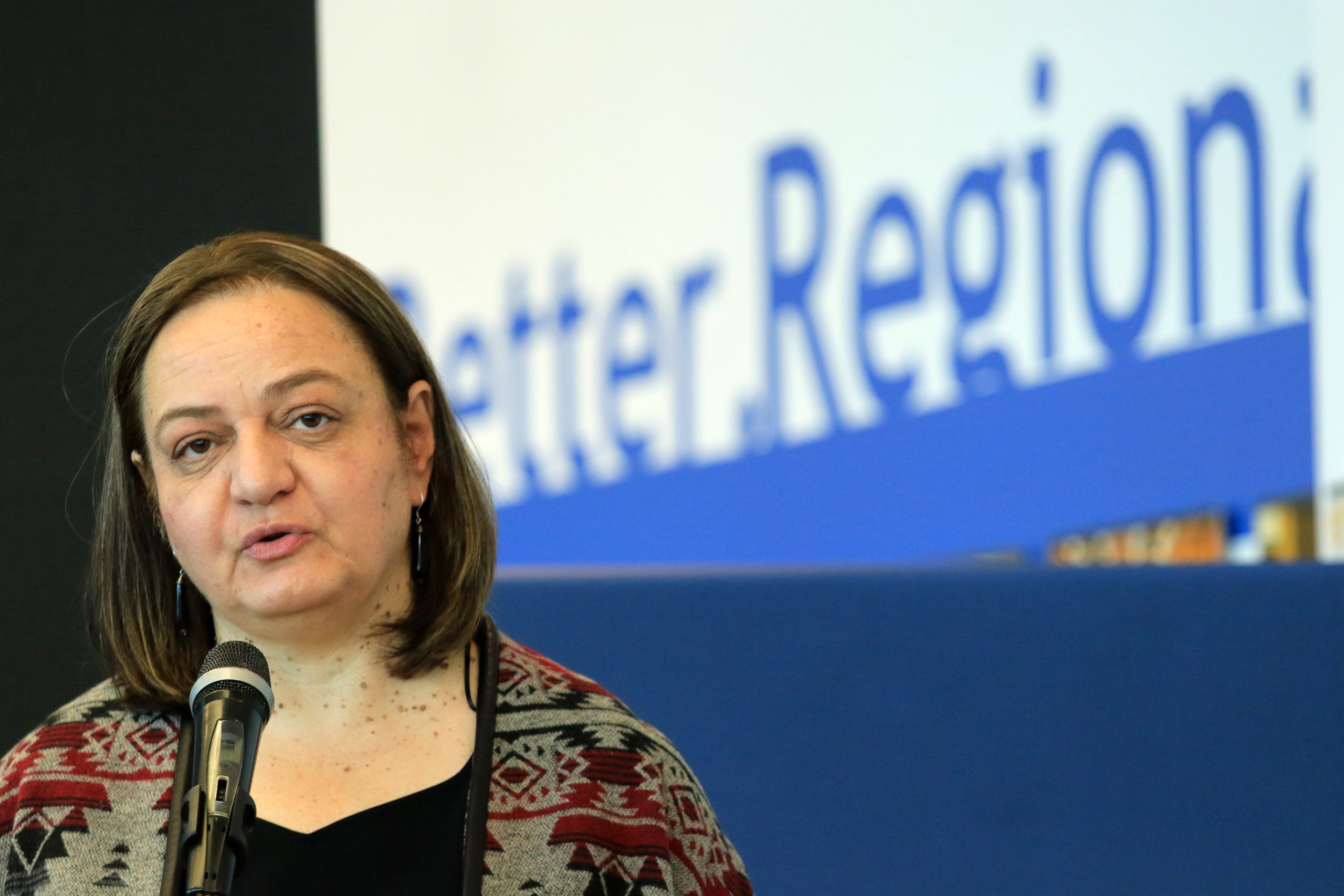Interview with Snježana Derviškadić, Team leader, Triple-P Tourism in SEE: Promotion, Policy, and Pilots project
CBIB+3: What is Triple-P Tourism in SEE and what are its objectives?
S.D.: Triple-P stands for promotion, policy and pilot projects but in practical terms it is all about tourism development in the Western Balkans and its global promotion.
The project essentially works to develop joint regional cultural and adventure tourism offer, improve skills amongst tourism workers, remove administrative barriers to further development of tourism, and to promote newly created tourism products both regionally and internationally.
The big picture behind the project is that we, i.e. the region, want to tap into underutilised cultural and adventure tourism potentials, turn them into an attractive tourism offer and bring more tourist to the region.
The ultimate goal is to increase tourism generated revenues, have more people employed in the industry and of course to contribute to the economic growth of the region and its competitiveness.
CBIB+3: Your project is implemented by Regional Cooperation Council (RCC). Could you please explain to our readers what RCC is and how your project fits into the RCC’s mission?
S.D.: The RCC stands for social and economic growth and development of the region and its European and Euro-Atlantic integrations.
It is regionally owned and regionally led cooperation framework which brings together governments and international community actors and operates under the political guidance of the South-East European Cooperation Process.
The tourism project fits right into the RCC mission and its modus operandi.
The project was developed and is now implemented by the RCC at the request of governments in the Western Balkans, or better said their representatives in the South East Europe Investment Committee and the intergovernmental Tourism Expert Group (TEG). This, however, would not be possible without the generous support of the European Union which in general supports the development of the region and is funding the project with 5 million euros.
CBIB+3: What do you see as a major potential of the WB region in the tourism industry?
S.D.: It is first and foremost our region’s authenticity and when I say authenticity I refer to our unique blend of cultural heritage.
Today’s travellers seek a genuine experience of local culture and tradition and the Western Balkans is offering exactly that; not only through cultural heritage visible through architecture and heritage sites but by enabling visitors to experience living heritage and tradition every step of the way.
This is further strengthened by a diverse natural heritage which in itself is a discovery yet to be made by a vast number of international travellers.
That is why our project is working on the development of four regional tourism routes which have, through consultative process and with expert assistance, been identified as routes that have a strong market potential and can be marketed as joint regional product.
Those include Balkan Monumental Trail which has cultural heritage in its core and addresses the art and design value of the post WWII period monuments; the Illyricum Trail which connects the Roman period heritage from our region and links it with the Roman Emperors and Danube Wine Route which mostly runs north of Danube and is the CoE certified European Cultural Route; as well as the Western Balkans – Crossroads of Civilisations which represents a regional identity that through an archipelago of sites communicates the multi-layered cultural heritage of the Western Balkans.
On the natural heritage side we have Via Dinarica Mega Trail which travels through the region following the range of the Dinarica Alps and is the region’s flagship adventure travel route. Our support to Via Dinarica focuses on strengthening the regional management of the route, facilitating the organisation of the route and sharing of knowledge and lessons learned that are focused on providing the visitors with reliable and complementary levels of services.
Via Dinarica is best known as a hiking route, but we rather see it as a cultural and adventure travel corridor through the region that will home many new programs in the times to come. One has already emerged: the Trans Dinarica is a mountain biking option to travel the route and it is already receiving attention in the markets.
CBIB+3: What is still missing in the region in order to get maximum usage of these potentials?
S.D.: On one hand we can say that many things are missing such as better connectivity, better policy, better education, and yes the region needs to continue to work on all of these issues.
But we also need to be aware of the fact that the essence of the regional tourism product is there and that the region already enjoys certain recognition in the international tourism markets. This tells us that the time to react is now, to work together with greater intensity and to maintain the focus on the travel market as the current trends in the industry are favourable for the potentials the region holds.
The tourism industry and its policy makers represented in TEG are aware of this. Together with the TEG we have already identified policy areas that operationally present obstacles to the tourism industry, and these are currently under review to identify long term policy solutions. But through our project we are also working to help the region keep the focus on the markets and market trends, we keep consolidating and diversifying regional cultural and adventure tourism offers, and we keep making them more attractive and competitive.
The work ahead of us all, nonetheless, requires that regional cooperation and coordination on all levels is maintained and further increased. Better utilisation of the resources will grow the industry and also strengthen its ability to address the issues such as transport infrastructure or major interventions in the policy framework.
CBIB+3: What are the major policy barriers to regional tourism development and what are the possible solutions for these challenges?
S.D.: We need to keep two things in mind when we talk about policy framework. One is that the policy framework, i.e. legislation, is not identical in all Western Balkan economies. Some have made progress in certain areas, other in others. The second is that, generally, the policy solutions are neither developed, not implemented overnight, therefore they need to be observed and delivered over time.
Based on a research previously conducted by the OECD, and in coordination with the Tourism Expert Group, we have identified four main policy areas that are currently being analysed in all six WB economies. We are looking at visitor mobility, i.e. ease of border crossing including visa regimes, collection of tourism data and statistics needed to inform planning and decision making, approach to workforce skills development and mobility, and finally the practices of responsible and sustainable tourism management.
The analysis will provide recommendations on how to further improve policy frameworks in all six economies and establish environment in which the industry will be able to maximise its effectiveness. Additional policy changes beyond those four areas may and are likely to be required, but let us start here, and in this start we are being led by industry inputs so that we can address the obstacles that most affect their daily operations.
CBIB+3: One of your major tasks is to strengthen cooperation among public, private and civil sector in development of joint offer. Could you please let us know what is the current situation in the region, does this cooperation exist and is there any good example of this cooperation?
S.D.: The short answer is yes, the cooperation exists. It exists at the regional level; the Tourism Expert Group is a living proof of that, regional routes that are being developed are living proof of that. It also exists at bilateral level; cross border cooperation interventions in tourism are the best example. There is also cooperation among actors within individual economies.
As for the areas of cooperation, it is mostly present in product development and product marketing, but less in policy solutions, education, and mobility of workforce, and this is something we will work to address.
An additional area of cooperation that will also need to be taken into account is setting the common standards of service quality so that the visitors, and especially more affluent ones, can know what to expect from their visit all the way. Without it, visitors are inclined to visit only parts of the region they are familiar with rather than explore it wider, or even choose a completely different destination where such assurance is provided.
Establishing such cooperation would help meet expectations and give additional boost to the presence and promotion of the Western Balkans in the market, and as already noted it would bring the region to the attention of more affluent travellers.
CBIB+3: Have you already developed and globally promoted any of the regional tourism offer involving 3+ economies?
S.D.: Via Dinarica and Trans Dinarica are both marketable products and those have been promoted through international travel magazines but also at some of the leading international tourism fairs including Adventure Travel World Summit, Fiets en Wandelbeurs fair in Utrecht, ITB Berlin and Bike Fest at Riva del Garda.
We have also used the ITB Berlin to introduce the three new regional cultural tourism routes now under development and those include the Western Balkans – Crossroads of Civilisations – a route being built around common cultural heritage spanning from Greek and Roman era, Byzantine, Ottoman and Austro-Hungarian empires; the Balkan Monumental Trail exploring art and design of World War II monuments; and the Illyricum Trail based on Roman archaeological sites.
We are now developing marketing strategies and business models for all those routes and are also utilising grants scheme to implement small scale projects that will improve quality of services and infrastructure along those routes.
CBIB+3: Until now you have launched 2 call for small tourism grants (up to EUR 54,000 each), while the second is under evaluation you have already contracted grants under the first call. Could you please tell us more about the projects you contracted, what are their objectives and achievements until now?
S.D.: Yes, that is correct. We have had two calls for project proposals. Project from the first call have been fully implemented and we are now evaluating the projects submitted under the second call.
Out of the twelve projects implemented under the first call, six focused on adventure tourism routes and six addressed development needs in the regional cultural tourism.
Three adventure tourism projects led to development of new sections of Via Dinarica to better connect Albania, Bosnia and Herzegovina, Kosovo*, Montenegro and Serbia and strengthening of cooperation among tour operators, mountaineering clubs, development agencies and local authorities. Another project established bike friendly standards for service providers and initiated certification of service providers in Bosnia and Herzegovina, Montenegro and Serbia. Project implement in Albania, Kosovo and Montenegro focused on development of cultural heritage component of Via Dinarica trail running through the Accursed Mountains, while a project implemented in Bosnia and Hercegovina and Serbia led to the establishment of a new 500-kilometers long horseback riding route.
Projects implemented in the field of cultural tourism focused on reviving fortresses and their legends in Albania, Bosnia and Herzegovina, Montenegro and Serbia; valorising cultural heritage of Kotor, Novi Sad and Sarajevo; conducting research and creating conditions for the development of Balkan Monumental Trail and Illyricum Trail encompassing all WB6, and development of a mobile application to guide visitors down seven cultural tours in Skopje Old Town, Republic of North Macedonia.
All of these results are contributing to the development of joint regional cultural and adventure tourism routes and each of the implemented projects also included a promotional component.
CBIB+3: When do you expect to contract projects selected under the second call and when are you planning to launch the third call?
S.D.: Signing of contracts under the second call is tentatively set for mid-October whereas the third call is expected in November.
CBIB+3: How do you see tourism sector in WB in five years?
S.D.: I would say that the tourism in the Western Balkans is at a critical time of its development. There are, plastically portrayed, two possible avenues for its development over the next five to ten years. One is to “grow and burst”, and the other is to “grow and blossom”. What does this mean?
This means that the growth is inevitable and certain locations already face negative aspects of growth; just look at the season peaks in Mostar or Boka Kotorska with the ”over-tourism”.
So the region is faced with a critical decision. It may decide to ride on organic growth that will remain focused on top locations without development of more remote areas of the region which will soon result in those top locations bursting with too many visitors for their capacity. This is the “grow and burst” option.
Alternatively, the region may decide to grab hold of its tourism growth and actively pursue building capacities for responsible and sustainable tourism management. Under this model top locations remain top locations but remote areas are also popularised and tourism flows are managed throughout. This approach uses best sustainable tourism management practices and leads to a long term preservation and utilisation of those resources. This is the “grow and blossom” option.
Luckily the region has declared its commitment to the latter option, i.e. to responsible and sustainable tourism development.
This is not an easy path as it concerns tourism operations at all levels, but it also extends into other spheres of social organisation and management, from natural resource management over environmental protection, to management of resources such as water (rivers, lakes and sea), and forests, as well as waste management, energy sources, etc.
This process takes time, however, the most important thing is that the region has committed itself to such an approach and it remains dedicated to pursue that commitment.
Our project support for the shared aspiration towards sustainable tourism is delivered through the above mentioned policy assessment that will determine already existing knowledge and experience of the sustainable tourism and the consequent assistance in developing recommendations that will foster exchange and peer learning as well as formulate necessary policies.
In addition to policies, we will also identify measures that can be taken by the tourism industry itself so that the region can truly become a responsible and sustainable tourism destination.
So yes, we have a lot of work ahead of us.


